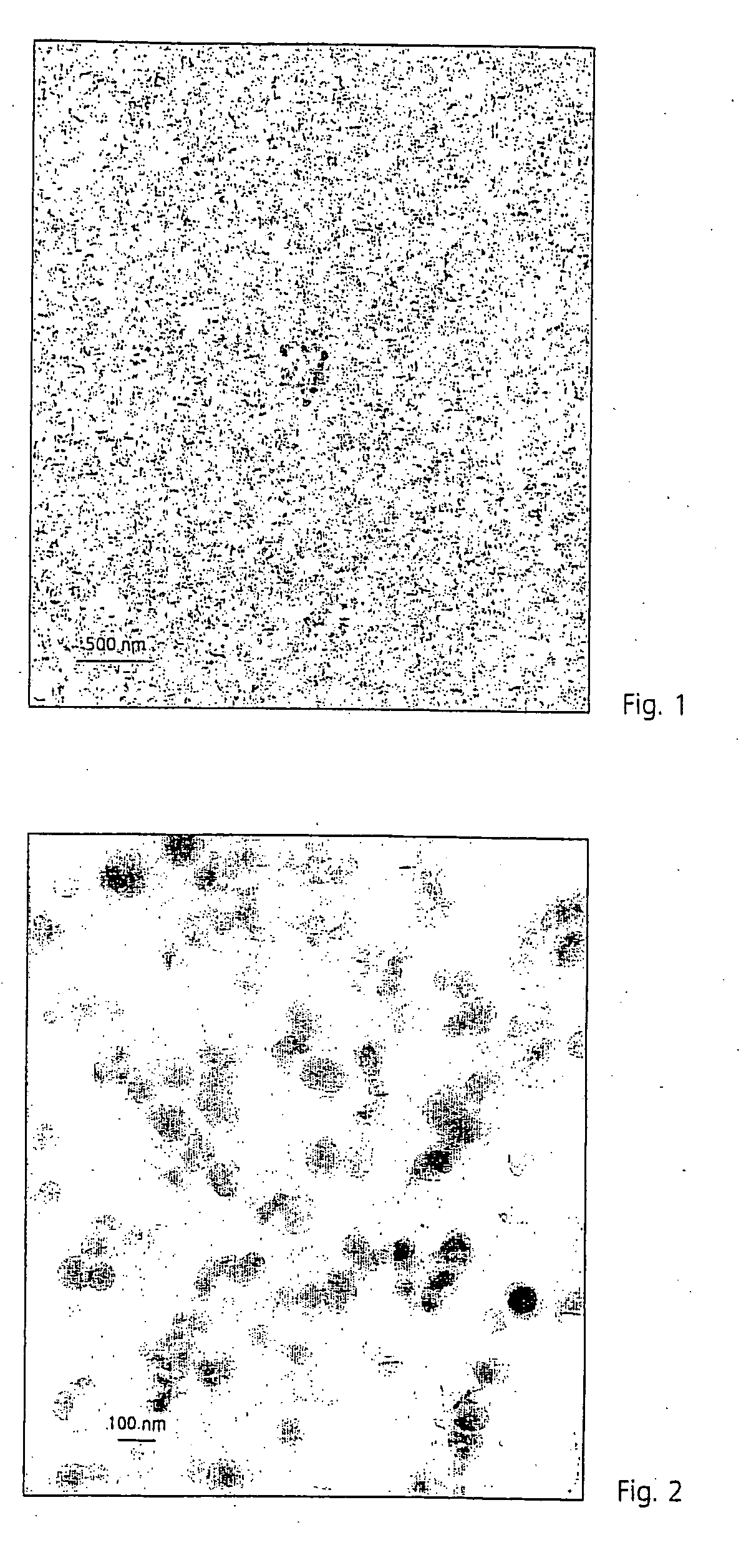Nanocomposites, method of production, and method of use
a technology of nanocomposites and nanoparticles, applied in the field of nanoparticle composites, can solve the problems of high raw material cost, low degree of filling, and insufficient measures to make available largely scattered nanoparticles in organic binders, and achieve the effect of cost-effectiveness
- Summary
- Abstract
- Description
- Claims
- Application Information
AI Technical Summary
Benefits of technology
Problems solved by technology
Method used
Image
Examples
example 1
[0067] Production of a nanocomposite from an epoxy resin with a modified nanofiller:
[0068] a) Organic Modification of the Agglomerated Nanofiller
[0069] 40.3 g of Aerosil 200 was suspended in butanone (650 g) for 5 min and 25.5 g of 2-(3,4-epoxycyclohexyl)ethyltrimethoxysilane (ECHTMO) and 5.6 g of 1 N hydrochloric acid were added dropwise to the catalysis. The mixture was stirred for 48 h. Then the butanone was drawn off completely on the rotary evaporator. A loose porous white powder was obtained.
[0070] b) Production of a Masterbatch in Epoxy Resin
[0071] A masterbatch with 50% by wt of the modified filler in the epoxy resin ERL 4221 (Union Carbide) is produced. 30.2 g of the filler modified according to a) and 1.5 g of Disperbyk-111 were added to 30 g of the epoxy resin in several portions under stirring with the Dispermat CA 40 C at 1-2 m / s. Dispersion was carried out at 8 m / s between the additions. In all, the batch was dispersed for 8.5 h at a circumferential speed of 8 m / s ...
example 2
[0077] Modification of a Silicon Dioxide Produced by Flame Pyrolysis without Acid Catalysis:
[0078] Catalysis with HCl was omitted in this test. 40 g of Aerosil 200 was suspended in 600 g of butanone, the silane ECHTMO (25.2 g) was added dropwise slowly via a dropping funnel, and the mixture was stirred for 16 h. Then the butanone was drawn off completely on the rotary evaporator. The filler resulted as porous clumps that could readily be reduced with a mortar.
example 3
[0079] Production of a Nanofiller with Acrylate Groups:
[0080] Ethanol KOH (1.62 g KOH in 30 mL ethanol) was slowly added dropwise to 5.16 g of (3-mercaptopropyl)trimethoxysilane and 6.78 g of hexanediol diacrylate in 250 mL of ethyl acetate at 0° C. under N2 atmosphere, so that the reaction temperature of 20° C. was not exceeded. The reaction is stopped after 5 min. An iodine test was used to test for complete conversion. The reaction solution was shaken out three times with saturated NaCl solution, after which processing the organic phase was neutral and cloudy. The Aerosil 200 was suspended in the organic phase and the reaction was catalyzed with 1 mL of 0.5 N HCl. Stirring was carried out for 24 h at room temperature and then the ethyl acetate was drawn off on the rotary evaporator. A loose white powder resulted.
PUM
| Property | Measurement | Unit |
|---|---|---|
| Dispersion potential | aaaaa | aaaaa |
| Flexibility | aaaaa | aaaaa |
| Transparency | aaaaa | aaaaa |
Abstract
Description
Claims
Application Information
 Login to View More
Login to View More - R&D
- Intellectual Property
- Life Sciences
- Materials
- Tech Scout
- Unparalleled Data Quality
- Higher Quality Content
- 60% Fewer Hallucinations
Browse by: Latest US Patents, China's latest patents, Technical Efficacy Thesaurus, Application Domain, Technology Topic, Popular Technical Reports.
© 2025 PatSnap. All rights reserved.Legal|Privacy policy|Modern Slavery Act Transparency Statement|Sitemap|About US| Contact US: help@patsnap.com

